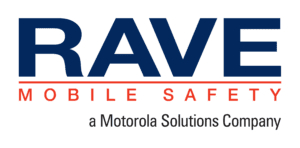The 2021-2022 school year was another challenging time for both K-12 schools and higher education institutions. Students, faculty, staff, parents, and broader communities continued to deal with challenges — a new fast-spreading variant, hybrid learning models, scheduling uncertainty, staffing difficulties and more — brought on by the pandemic. Maintaining positive, safe, and effective learning environments was no easy task.
Though COVID-19 safety is still a top priority, it’s clear that the pandemic has taken a heavy toll on students, parents, faculty, and staff alike. After two hard years, people are exhausted, and campus leaders are concerned about how that will present itself going forward if the right resources and safety measures aren’t in place.
To better understand how K-12 and higher education staff members are thinking about school safety in the coming academic year, Rave Mobile Safety fielded its second annual national survey of over 400 K-12 employees and over 380 higher education staffers in February 2022. COVID-related safety measures are the highest safety concern for respondents in higher education (71%) and the second-highest safety concern for K-12 (52%). However, the survey’s findings demonstrate that leaders are beginning to refocus on other dimensions of school safety beyond implementing social distancing, mask-wearing, daily health checks, and other COVID-related measures. Managing mental health and violence on campus are two clear top priorities for the 2022-2023 school year, as well as figuring out how to communicate crises across campuses when emergency situations do arise.
Here are the survey’s key findings:
- Student mental health is the top safety concern for the 2022-2023 school year for K-12 respondents (61%) and the second-highest concern for higher education respondents (59%).
- Faculty and staff mental health is the third-highest safety concern for respondents from both K-12 schools (52%) and higher education institutions (44%).
- Concerns about active assailants on campus rose dramatically year-over-year for both K-12 respondents (+14%) and higher education respondents (+15%).
- K-12 survey respondents also shared increased concern about cyberbullying compared to 2021 (+12%), while higher education administrators expressed increased anxiety regarding crime (+20%) and severe weather events (+19%).
- To address these concerns, respondents on both the K-12 (43%) and higher education (39%) fronts are investing more heavily in mental health resources.
- For crisis communications, K-12 respondents indicated room for improvement in reaching staff (23%), and students and parents/guardians (26%), while higher education respondents had somewhat less concern in reaching staff (16%), and students and parents/guardians (15%).
About Rave Mobile Safety:
Rave Mobile Safety is the leading provider of critical communication and collaboration technology used to save lives, manage crisis incidents and increase resiliency. From major disasters and crisis events to everyday emergencies and operational incidents, the Rave platform enables critical data sharing, mass notification and emergency response coordination. Over 8,000 first responder, emergency
management, 9-1-1, and federal, state and local agencies—as well as corporations, healthcare organizations, universities and schools—all rely on Rave to prepare better, respond faster, recover quicker and mitigate anticipated critical incidents. Founded in 2004, Rave’s award-winning software solutions are backed by leading growth equity firm TCV. Let Rave enable you to do all you can today® to keep everyone safe. To learn about Rave’s critical communication and collaboration platform or to download the full report, visit Rave Mobile Safety, a Motorola Solutions Company.














